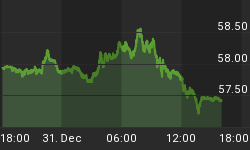There are legitimate concerns that the U.S. could catch the "Japanese" disease and endure a lost decade in terms of normal economic growth. What would be the recipe for such? Chart 1 shows the behavior of the 40-quarter (10-year) compound annual growth in Japanese nominal GDP and the 120-month (10-year) compound annual growth in the Japanese M-2 money supply. (The shaded areas are periods of economic recession in Japan.) Notice how the 10-year annualized growth in M-2 has been trending ever lower, especially between 1990 and 2000. Since September 2000, the 10-year annualized growth in Japanese M-2 has ranged only from about 3% to about 2%. Chart 2 shows that this downward trend in Japanese M-2 growth has been accompanied by an exceptionally low Bank of Japan policy interest rate.
Chart 1
Chart 2
Now, it is not as though Japanese real GDP did not grow in the past twenty years. It has, as shown in Chart 3. But, not surprisingly, similar to Japanese M-2 growth, trend Japanese real GDP growth has been slowing and has not been up to the 2% mark since 1997. Given a declining population and workforce, we should not expect a high rate of growth in aggregate Japanese real GDP. But as shown in Chart 4, trend real GDP growth in Japan has consistently been below the sum of trend growth in the Japanese labor force and the trend rate of growth in Japanese labor productivity since 1998. Thus, something else has been constraining Japanese economic growth.
Chart 3
Chart 4
I would argue that weak bank lending (see Chart 5), which is related to weak M-2 growth, bears a lot of the responsibility for the trend underperformance of the Japanese economy.
Chart 5
Although the U.S. M-2 money supply growth on a trend basis is currently nowhere near as weak as that of Japan (see Chart 6). On a year-over-year basis, however, U.S. M-2 growth is very slow, just under 2% (see also Chart 6). The reason for the recent weak year-over-year growth in U.S. M-2 is the recent contraction in U.S. commercial bank credit (see Chart 7). And, as has been the case in Japan, weak U.S. money and bank credit growth is occurring in the context of very low monetary policy interest rates. Something is wrong with the transmission mechanism between the Fed and the economy. The private financial system is not transforming the inexpensive credit being offered it by the Fed into credit for the private nonfinancial sector of the U.S. economy. Until this transmission mechanism between the Fed and the economy gets mended, we are unlikely to experience potential economic growth.
Chart 6
Chart 7
















